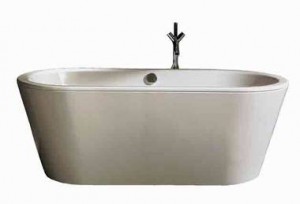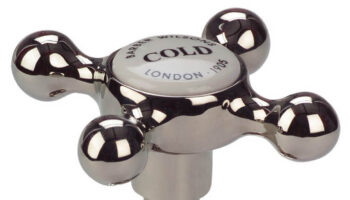It’s the classic free-standing tub. You might even have one that looks pretty similar. But this is a Philippe Starck and it costs around £5,000. The Starck 2 was the first contemporary free-standing bathtub. Before this, there was only the Victorian roll-top, which took your bathroom design in a retro direction. But this was double-ended, seamless and very modern. And it became the blueprint for the new, minimalist bathroom style.
Rachel Martin, head of merchandising at designer bathroom store CP Hart, said: “Since the 19th century, free-standing baths have been a sought-after luxury in the UK. In 1994, the German bath manufacturer Hoesch launched the first premium-branded, acrylic, double-ended, free-standing bath designed by Philippe Starck. This was designed around a bucket shape.
“Four years later, the 2 bath was launched… which soon became our best-selling bath ever.”
The Starck 2 combined an outside shell of polyurethane with an inside of acrylic – a novel mix. This, coupled with its seamless finish inside and out, gave it universal appeal, as acrylic has similar heat-retaining qualities to cast iron but is much lighter. Some vintage cast-iron baths need the floor to be strengthened as they weren’t designed to be put upstairs.
In an interview in 2008, Starck spoke about the creation of the salon d’eau, a concept dreamt up shortly before the 2 bath and which would ultimately lead to its creation as part of his idea that the bathroom should be a place for pleasure.
“Before, a bathroom was just a room where you washed yourself. It was not very glamorous. We invented this salon d’eau as a room for pleasure. All the pieces, the sink, the bathtub – everything was like a piece of furniture. Have a fireplace, a thing like that, and it [the bathroom] becomes a place to rest and to speak with the love of your life,” he said.
“Since its launch, some 10,000 2 baths have been sold globally and it is probably the most iconic freestanding bath in the world and therefore the most copied,” Rachel said.
Even Starck has acknowledged that his work is widely copied: “There are an awful lot of copies of my furniture [but especially of the bathroom range]. I have never seen anything like it. Many of the copies are so exact that even I have to look twice at times.”
first published in The Independent






